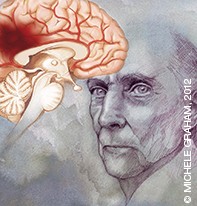Peer Reviewed
Feature Article Stroke
Stroke in the elderly: predictable, preventable and treatable
Abstract
Stroke is the second most common cause of death worldwide, with most of the disease burden falling to the elderly and the very elderly. Effective treatments are available for acute management as well as for primary and secondary prevention of stroke. GPs are particularly well placed for identifying at-risk patients and for initiating ‘triple therapy’ of aspirin, a high-dose statin and blood pressure-lowering therapy.
Key Points
- Stroke is the second most common cause of death worldwide and predominantly affects the elderly.
- Aspirin therapy, referral to a stroke unit and thrombolysis within 4.5 hours of onset are interventions that are of proven benefit for acute ischaemic stroke.
- A transient ischaemic attack (TIA) is a medical emergency and presents an urgent window of opportunity to prevent a completed stroke.
- Stroke prevention can be achieved by urgent diagnostic evaluation of a TIA and by starting ‘triple therapy’ with aspirin, a high-dose statin and blood pressure-lowering therapy.
- Treatment with an antiplatelet agent should be started immediately in patients who have experienced a transient focal neurological event.
- Anticoagulation therapy is vastly superior to treatment with antiplatelet agents for patients with atrial fibrillation.
- Carotid imaging is one of the most critical investigations in preventing stroke and should be performed urgently, followed by referral for surgery if a significant symptomatic stenosis is identified.
Purchase the PDF version of this article
Already a subscriber? Login here.

